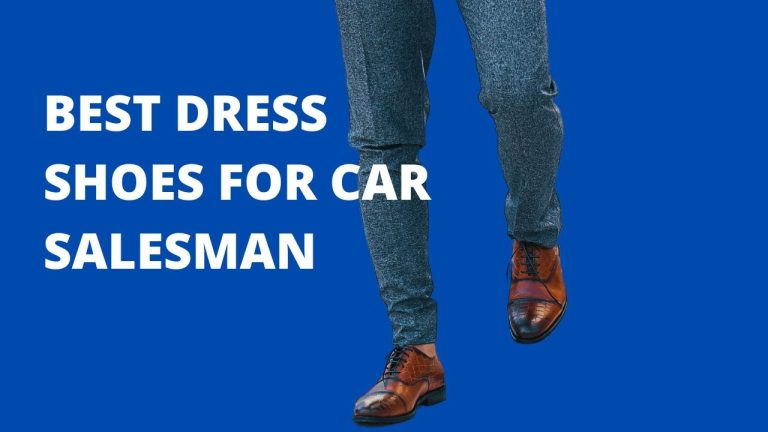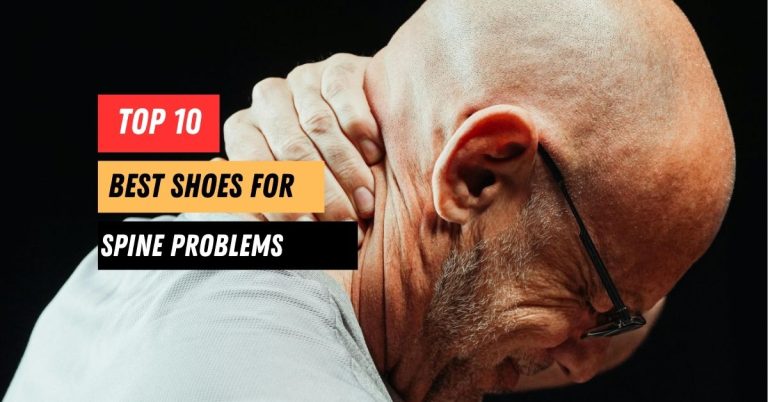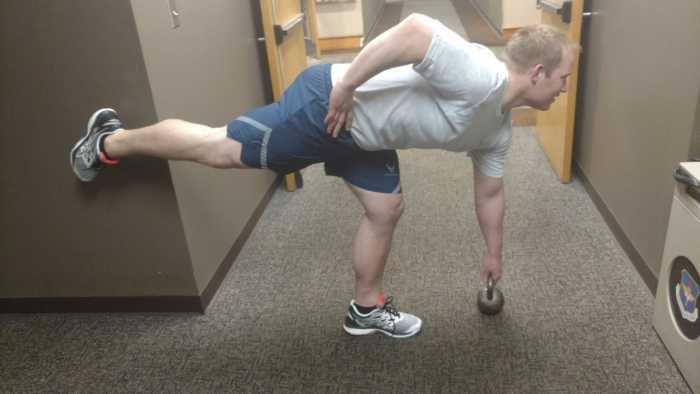The Top 10 Best Running Shoes to Wear With Orthotics
When it comes to running with orthotics, selecting the right shoes is not just a matter of comfort—it’s essential for your safety and performance. Orthotics are designed to correct foot alignment, distribute pressure evenly, and support your foot’s natural structure. However, without the proper footwear, the benefits of orthotics can be significantly undermined. This is why choosing the best running shoes that are compatible with orthotics is crucial.
Such shoes should accommodate the orthotic insert while maintaining their essential features like cushioning and support. This article aims to guide you through the selection process, ensuring you find a shoe that enhances your orthotic’s effectiveness and, ultimately, your running experience.
Top 10 Shoe Reviews for Running with Orthotics
1. Brooks Adrenaline GTS 21
Brooks Adrenaline GTS 21 is renowned for its exceptional support and comfort, making it a top choice for runners who use orthotics. The shoe features a modernized fit with 3D Fit Print technology, ensuring a streamlined, secure feel. The DNA LOFT cushioning provides a soft, luxurious feel underfoot without losing responsiveness or durability. Notably, its GuideRails holistic support system is crucial for those needing extra stability, helping to keep excess movement in check and reducing strain on joints.
The spacious toe box offers ample room, which is beneficial for those with wider feet or who need extra space for orthotics. The mesh upper is both breathable and flexible, adapting well to different foot shapes. Transitioning from heel to toe is smooth, courtesy of the segmented crash pad, making each stride comfortable and stable. Importantly, the removable insole allows for easy insertion of custom orthotics, ensuring a personalized fit and enhanced arch support.
-
Pros:
- Excellent arch support and stability
- Soft and responsive cushioning
- Breathable, flexible upper
- Roomy toe box
- Removable insole for easy orthotic accommodation
-
Cons:
- Higher price point
- May be too bulky for some runners
- Limited color options in certain sizes
2. Asics Gel-Kayano 28
Asics Gel-Kayano 28 is a staple in the running community, especially among those who wear orthotics due to its supportive and comfortable design. The shoe features DYNAMIC DUOMAX technology that provides increased stability and support, while reducing weight and enhancing platform comfort. The GEL technology cushioning ensures high-density shock absorption in high-impact areas, offering a protective and comfortable ride.
The engineered mesh upper allows for superior breathability and a snug fit, adapting well to the movement of your foot. This model includes an orthotic-friendly removable sockliner, which can be replaced with custom orthotics for tailored arch support and cushioning. The AHAR outsole offers exceptional durability, resisting wear in critical areas, making it a long-lasting option for frequent runners.
-
Pros:
- Enhanced stability and support with DYNAMIC DUOMAX
- Superior shock absorption with GEL technology
- Breathable, snug-fit mesh upper
- Durable AHAR outsole
- Removable sockliner suitable for orthotics
-
Cons:
- Slightly heavier than some competitors
- Can feel stiff until broken in
- Premium price tag
3. New Balance 990v5
New Balance 990v5 excels in providing a balance of cushioning and stability, suited perfectly for runners who use orthotics. The ENCAP midsole technology combines lightweight foam with a durable polyurethane rim to deliver all-day support and comfort. The upper is made from breathable mesh and sturdy suede, which not only looks stylish but also provides durability and a comfortable fit.
This shoe is known for its extensive size and width offerings, accommodating a wide range of foot shapes and sizes. The removable insole makes it easy to fit orthotics, while the blown rubber outsole ensures good traction and longevity. The 990v5 is particularly praised for its conservative yet functional design, making it suitable for both running and casual wear.
-
Pros:
- Excellent support with ENCAP midsole technology
- Durable and stylish suede and mesh upper
- Wide range of sizes and widths available
- Good traction with blown rubber outsole
- Removable insole for easy orthotic fitting
-
Cons:
- On the expensive side
- Some users find it less responsive
- Relatively heavy, which may affect speed-focused runners
4. Saucony Guide 14
The Saucony Guide 14 is a solid choice for runners needing a reliable shoe that accommodates orthotics without sacrificing performance. It features an updated midsole, the PWRRUN foam, which provides just the right amount of softness and responsiveness. The shoe’s medial TPU guidance frame is designed to ensure smooth transitions and additional support, ideal for those with overpronation.
The upper is crafted from engineered mesh for a comfortable, breathable fit that moves with your foot. This shoe is particularly noted for its FORMFIT technology, which contours to your foot, providing a custom fit. The Guide 14’s streamlined design and improved cushioning make it both a functional and fashionable option for everyday runners.
-
Pros:
- Responsive and durable PWRRUN cushioning
- Medial support for overpronators
- Breathable, adaptive engineered mesh upper
- Streamlined, attractive design
- FORMFIT technology for a personalized fit
-
Cons:
- May run slightly small
- Cushioning might be too firm for some preferences
- Limited color options compared to other models
5. Hoka One One Arahi 5
Hoka One One Arahi 5 stands out for its innovative approach to stability, making it ideal for runners with orthotics. It features the J-Frame technology, which uses a firmer foam on the medial side to prevent excessive inward rolling of the foot, while maintaining a lightweight and cushioned feel. The shoe offers a high level of cushioning, which is characteristic of Hoka’s midsole geometry, designed to provide smooth and comfortable strides.
The engineered mesh upper is lightweight and offers superior breathability, while the wide base provides inherent stability without the weight of traditional maximalist shoes. The Arahi 5 is praised for its versatility, being robust enough for long runs yet light enough for quicker sessions.
-
Pros:
- Lightweight, cushioned stability with J-Frame technology
- High level of cushioning ideal for long runs
- Breathable, lightweight upper
- Wide base for inherent stability
- Versatile for different running demands
-
Cons:
- Some runners may find the design too bulky
- Limited flexibility compared to other models
- Higher price point
6. Nike Air Zoom Structure 23
The Nike Air Zoom Structure 23 is designed to provide stability and cushioning for runners who require additional support, making it an excellent option for those using orthotics. The shoe features Nike’s Air Zoom unit in the forefoot, which offers responsive cushioning, vital for maintaining a smooth and efficient stride. The midsole uses a foam compound that enhances durability and stability without adding extra weight.
The engineered mesh upper provides structured yet breathable coverage, adapting well to different foot shapes. Additionally, the wide base enhances stability, a critical aspect for orthotic users who need reliable support to manage overpronation. The firm heel counter and slightly wider forefoot make it an ideal choice for adding orthotics without compromising on comfort or fit.
-
Pros:
- Responsive Air Zoom cushioning in the forefoot
- Durable and stable midsole
- Breathable, structured mesh upper
- Suitable for wide feet and orthotic accommodation
- Excellent traction for various surfaces
-
Cons:
- Slightly heavier than other stability shoes
- May not suit very narrow feet
- Some runners might find the design less stylish
7. Mizuno Wave Inspire 17
Mizuno Wave Inspire 17 is celebrated for its innovative technology that caters to runners needing extra support, making it another excellent choice for orthotic users. The shoe features the Mizuno Wave plate for enhanced stability and cushioning, distributing impact forces evenly across the foot and providing a secure, controlled run.
The U4ic midsole offers optimal shock reduction, resilience, and durability while remaining lightweight. The engineered mesh upper ensures breathability and flexibility, adapting seamlessly to foot movements and orthotics. The Premium Sockliner adds an extra layer of underfoot comfort, which can be removed to accommodate custom orthotics, making the Wave Inspire 17 highly adaptable.
-
Pros:
- Mizuno Wave technology for stability and cushioning
- Lightweight, durable U4ic midsole
- Breathable, flexible upper
- Removable premium sockliner for orthotic use
- Reliable traction and performance on different terrains
-
Cons:
- May feel stiff to some users initially
- Limited color choices
- Midsole might be too firm for those preferring softer cushioning
8. Altra Paradigm 5.0
Altra Paradigm 5.0 offers a unique approach with its zero-drop platform and foot-shaped toe box, ideal for orthotic wearers seeking a natural foot position while running. The shoe provides extensive cushioning through its Altra EGO midsole, designed to deliver a responsive yet soft ride. The GuideRail system acts as a stabilizing support to keep your stride aligned, which is particularly beneficial for those with overpronation issues.
The engineered knit upper is designed for comfort and flexibility, accommodating wider feet or orthotics easily. The FootPod technology on the outsole maps the bones and tendons of your foot, helping it to bend and move naturally, enhancing both comfort and stability.
-
Pros:
- Zero-drop platform for a natural foot alignment
- Extensive cushioning with Altra EGO midsole
- Foot-shaped toe box for natural toe spread
- GuideRail system for added stability
- Flexible, accommodating engineered knit upper
-
Cons:
- Zero-drop design may require adaptation for new users
- Bulkier appearance may not appeal to all runners
- Slightly less durable than some traditional models
9. Adidas Solar Glide ST 3
Adidas Solar Glide ST 3 is tailored for those who need support during their runs, perfect for accommodating orthotics. The Boost midsole provides energy-returning properties that keep every step charged with an endless supply of light, fast energy. The Solar Propulsion Rail helps to guide the foot for a more stable ride, which is enhanced by the Torsion System that allows for a smooth transition.
The mesh upper is flexible and breathable, fitting comfortably around different foot shapes and easily accommodating orthotics. The Fitcounter molded heel counter provides a natural fit that allows optimal movement of the Achilles, crucial for long-distance stability.
-
Pros:
- Energy-returning Boost midsole
- Solar Propulsion Rail and Torsion System for stability
- Breathable, flexible mesh upper
- Natural Achilles movement with Fitcounter heel
- Durable outsole suitable for long distances
-
Cons:
- Higher price point
- Might run small, requiring sizing up
- Heavier than some competitors
10. ASICS GT-2000 9
ASICS GT-2000 9 is a staple for runners who look for a blend of comfort, stability, and durability, making it suitable for those with orthotics. Featuring GEL technology cushioning in both the rearfoot and forefoot, it offers excellent shock absorption and a comfortable stride. The DYNAMIC DUOMAX support system enhances stability and support, with reduced weight and increased platform support.
The breathable mesh upper keeps the feet cool and comfortable over long distances, and the AHAR outsole material offers exceptional durability. The removable sockliner is an excellent feature for orthotic users, allowing for easy customization for foot support needs.
-
Pros:
- Excellent shock absorption with GEL technology
- Stability with DYNAMIC DUOMAX system
- Breathable, durable mesh upper
- High abrasion rubber outsole for longevity
- Removable sockliner suitable for orthotics
-
Cons:
- Some users find the toe box too narrow
- Cushioning may be too firm for some preferences
- Design may be perceived as less modern
Buyer’s Guide
When searching for the best running shoes to wear with orthotics, it’s important to consider several key factors that contribute to the effectiveness and comfort of the footwear. Here’s a detailed breakdown of what to look for:
1. Removable Insoles: The first and perhaps most crucial factor is finding shoes with removable insoles. This allows you to replace the factory insoles with your orthotics, providing a better fit and ensuring that the shoe can accommodate the extra volume of the orthotic.
2. Spacious Toe Box: A roomy toe box is essential when wearing orthotics. This feature prevents your toes from being cramped and allows sufficient room for movement, which is particularly important to avoid exacerbating issues like bunions or hammertoes.
3. Structured Design: Opt for shoes that offer a structured design. This means looking for shoes that provide good arch support and a firm heel counter. These features help stabilize the foot, enhancing the corrective action of your orthotics and reducing the risk of overpronation or supination.
4. Cushioning: Adequate cushioning is vital in any running shoe, but when you use orthotics, it’s important that the cushioning complements the support of your inserts. Look for shoes with a balanced, responsive cushioning system that can absorb impact without being too soft, which might counteract the benefits of your orthotics.
5. Material and Breathability: The material of the shoe should offer breathability to keep your feet cool and dry. Mesh uppers are typically a good choice as they provide ventilation while adapting well to different foot shapes and orthotic inserts.
6. Durability: Since orthotics alter the way you wear out your shoes, durability becomes an important consideration. Look for shoes made with high-quality materials and robust construction to withstand the additional wear and tear.
7. Grip and Traction: Finally, consider the outsole’s grip and traction, especially if you run on varied terrains. Shoes with good traction can prevent slips and falls, ensuring that your orthotics perform their job without causing unintended issues.
By keeping these factors in mind, you can choose running shoes that not only fit well with your orthotics but also enhance your running performance and safety.
FAQ
Q1: Can any running shoe accommodate orthotics?
Not all running shoes are suitable for orthotics. Shoes with removable insoles and a deeper footbed are usually better candidates as they provide the necessary space to house the orthotic comfortably.
Q2: How often should I replace my running shoes when using orthotics?
Typically, running shoes should be replaced every 300-500 miles. However, with orthotics, you may need to monitor the wear and tear more frequently, as the inserts can alter the pressure distribution inside the shoe.
Q3: Will orthotics affect my shoe size?
Orthotics can affect your shoe size, often requiring a slightly larger or wider shoe to accommodate the extra volume of the insert. It’s advisable to try on shoes with your orthotics to ensure a good fit.
Q4: What is the difference between over-the-counter insoles and custom orthotics?
Over-the-counter insoles offer general cushioning and support, while custom orthotics are specifically designed to correct your specific foot alignment and biomechanical issues. They are usually more effective but also more expensive.
Q5: How do I know if my running shoes are compatible with my orthotics?
Check for removable insoles, sufficient depth in the shoe, and ensure that the shoe does not become too tight with the orthotic inserted. It’s often helpful to seek advice from a specialist.
Q6: Can I use orthotics in minimalist running shoes?
Using orthotics in minimalist running shoes is generally not recommended as these shoes offer little cushioning and structure, which can counteract the benefits of the orthotics.
Q7: What should I do if my shoes feel uncomfortable with orthotics?
If discomfort persists, it’s important to consult with a healthcare provider or a specialist in orthotics. They can determine whether the issue lies with the orthotics or the shoes, and make the necessary adjustments.
Conclusion
Selecting the right running shoes for orthotic use is crucial for ensuring optimal safety, functionality, and comfort. These shoes not only accommodate the special needs of orthotic inserts but also enhance the runner’s performance by providing necessary support and stability. The reviewed models are among the best in the market, offering a range of options that cater to various needs and preferences while prioritizing orthotic compatibility.



